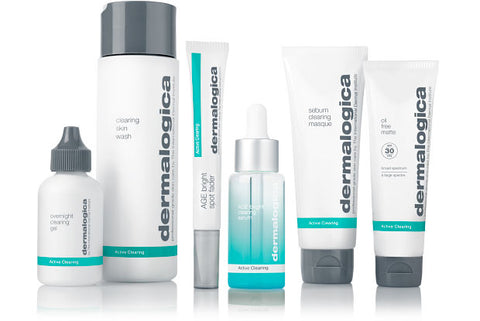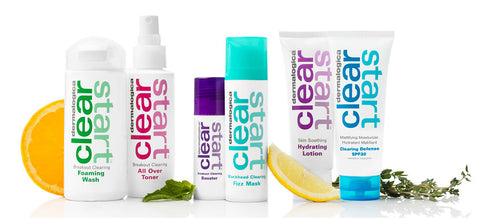
The difference between adult acne and teenage acne
Find out why your skin behaves differently as you age - and how to keep it clear.
story highlights
- Adult skin is less resilient than teenage skin, which has a higher cell turnover rate and heals faster.
- Keeping adult skin clear requires focusing on several internal and external factors, while teen skin requires more focus on cleansing and oil control.
Acne is uncomfortable at any age. But knowing how it behaves in adulthood compared to the teen years can help you clear your head.
Adult acne
Thought you could grow out of acne? If only. In today's world, chronic stress, hormonal changes, a hectic lifestyle and an increasingly polluted environment can lead to more adult acne, congestion and uneven skin tone. In general, skin cell turnover slows down as we age, so adult skin heals more slowly than teenage skin. This also explains why blemishes persist much longer after a breakout than they used to.
Adult acne is also related to hormonal fluctuations and chronic stress, which are more common in women. Acne breakouts are usually inflammatory (red, tender) and occur mainly in the mouth, chin and jaw area. Treating adult acne can be challenging because adults are also prone to sensitivity, dryness, and pigmentation issues that lead to signs of premature aging.
How to clear adult acne:
- Focus on treating blemishes and balancing the skin, and make sure your other skin care needs are met.
- Avoid "plucking" or "squeezing" breakouts at home, as this can lead to further breakouts, scarring, or redness. Instead, see a professional skin therapist for an extraction.
- Adult skin can lose its ability to retain moisture as it ages. Avoid over-drying the skin by choosing products that contain less drying ingredients, such as salicylic acid or glycolic acid, which help remove dead skin cells, excess oil and dirt, and thymol and terpineol, which fight bacteria.
- If you want to fight the signs of aging, look for ingredients like niacinamide and hexylresorcinol to even out uneven skin tone. Retinol - a wrinkle-smoothing ingredient - can also help reduce the appearance of premature aging.

Teenage acne
Teenage acne is partly genetic and partly hormonal and is strongly linked to puberty. In teens, pimples usually appear on the face, chest, and back, and they have more blackheads and whiteheads than adults. Such breakouts often occur because androgens, the "male" hormones that both boys and girls have, surge during puberty, causing excessive sebum production.
Teens have faster cell turnover and more resilient skin than adults, which means they recover quickly from breakouts. After the teen years, acne usually improves because the hormonal changes in teens have flattened out and no longer encourage breakouts.
How to get rid of acne in teens:
- Focus on learning and maintaining good skin care habits because you'll be more prone to acne in the future.
- Avoid products that contain pore-clogging ingredients like lanolin and mineral oil. Stripping ingredients like alcohol, which is often found in astringent facial toners, can cause the skin to produce even more oil, which in turn leads to even more breakouts. Artificial fragrances and dyes can also further irritate breakout-prone skin.
- Look for ingredients like salicylic acid that prevent dead skin cells and bacteria from accumulating.
- Use moisturizer and SPF daily. Dehydration and environmental stress can trigger increased sebum production and exacerbate existing breakouts. Even if your skin seems oily, you should use an oil-free moisturizer with SPF to protect and balance your skin.
- If you want to combat the signs of aging, look for ingredients like niacinamide and hexylresorcinol to even out uneven skin tone. Retinol - a wrinkle-smoothing ingredient - can also help reduce the appearance of premature aging.

Need more advice?
Visit a Dermalogica location near you for professional advice on what's causing your breakouts and how to achieve clear skin.

